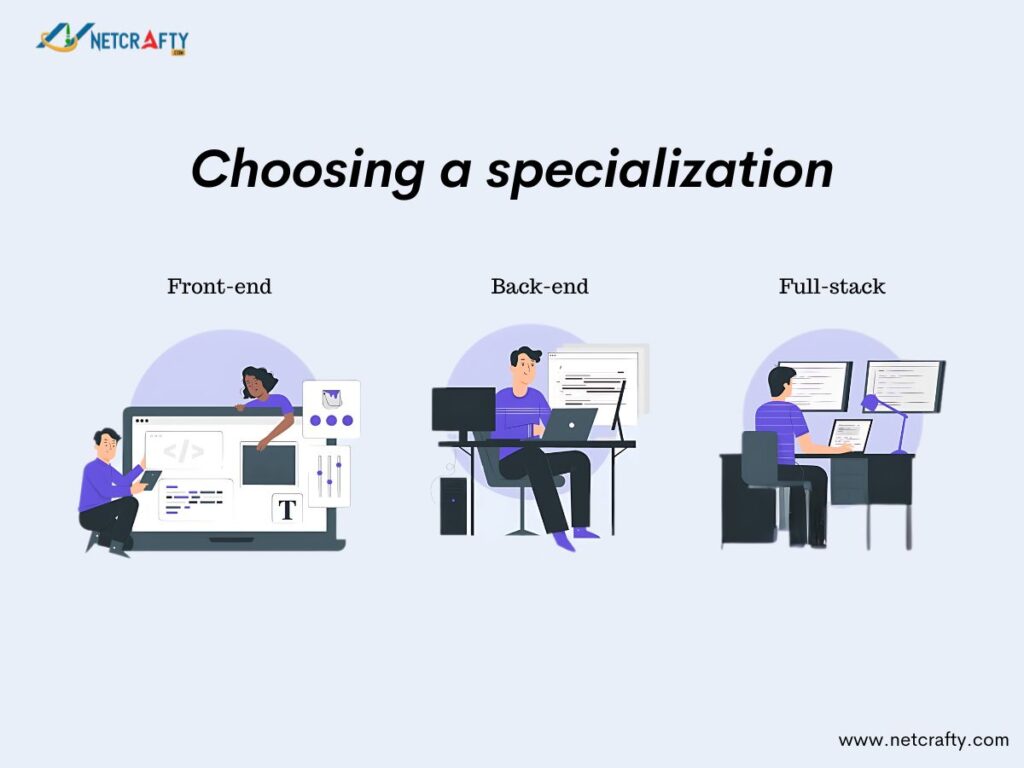Maintaining a competitive advantage in the fast-evolving world of web development requires a complete understanding of new frameworks, technologies, and best practices. As we approach 2024, the web development market constantly changes, presenting experts with new opportunities and challenges. To compete in this fast-paced industry, web developers must know about cutting-edge technologies and fundamental concepts.
What is Web Development?
Web development entails creating, testing, delivering, and maintaining websites and web applications, frequently required as part of your job in many organizations. As a web developer, you are responsible for designing, creating, and modifying websites to suit client requirements while guaranteeing their functionality, usability, and accessibility. Your main areas of expertise could be UX/UI design, SEO, web accessibility, internationalization, and localization.
Web development is more accessible than other technical professions, lowering the barrier to entrance. However, in this competitive and ever-changing market, you must study more than just the fundamentals to land a good job. You are in charge of developing the user’s online experience, which includes authoring web pages in markup languages, creating mockups, building WordPress sites from scratch, and maintaining and improving websites. Your particular responsibilities will differ depending on the position and your skill.
Choosing a specialization: Front-end developer, back-end developer, or full-stack?

A full-stack developer combines back-end and front-end development duties, making them adaptable and capable of managing the complete web development lifecycle.
The front end focuses on the website’s visual aspects and user interface, ensuring it is appealing and intuitive. It includes features that you can interact with directly, such as menus and drop-downs.
Meanwhile, the back end, like the submerged section of an iceberg, is responsible for the website’s functionality, including servers, apps, and databases.
Overview of the Web Development Roadmap?
Education flexibility: While a computer science degree is advantageous, you can begin with self-guided online classes.
Portfolio development: Creating a personal portfolio through minor projects or contributions to open-source projects highlights your abilities and improves your job prospects.
Career advancement: Beginning as a junior developer, you usually grow by concentrating on areas like front-end, back-end, or full-stack development, eventually moving on to mid-level roles with more responsibilities.
Continuous learning: Success in web development necessitates continual education to understand new technologies and best practices, with potential for advancement into jobs such as project management and UX/UI design.
How to become a web developer in 2024
To excel in browser-based technologies, follow these steps outlined in our web developer roadmap:
Core web technologies:
So, what foundational technologies form the backbone of the World Wide Web and its contents? If you are pondering “What language should I learn to be a web developer?” start by studying these first:
Core web languages such as HTML, CSS, and JavaScript
Key protocols including TCP/IP, HTTP/HTTPS, FTP, SMTP, and more
Fundamentals of web semantics, accessibility, and usability
Learn about the various types of web applications:
Investigate various types of web applications to see which best suits your needs. If you’re a beginner, familiarize yourself with the most commonly used types on the web, including:
- Static HTML pages: These websites display static content that is the same for each visitor, with no real-time interaction or modifications.
- Dynamic HTML: These websites use JavaScript and other technologies to update content dynamically, providing users with an engaging, interactive, and real-time experience.
- Server-based applications: These programs run on a server and generate dynamic content in languages like PHP, Python, or Java, then deliver it to the client’s browser.
- Single-page apps are web programs that load a single HTML page and dynamically update its content as the user interacts, resulting in a more consistent experience.
- Progressive Web Apps (PWA) provide a native app-like experience on the web, with offline access, push notifications, and fast loading times.
- Hybrid Apps: These mobile applications, built with web technologies, can act as web apps and native apps on various mobile platforms, combining the best.

Leave a Reply